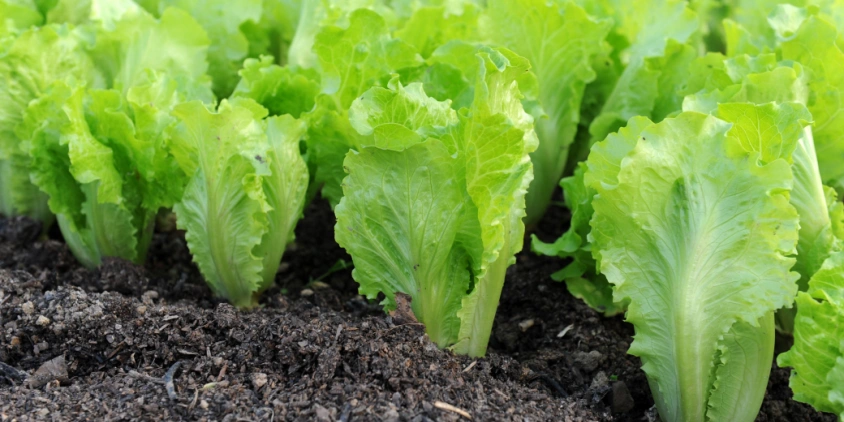
Growing Lettuce: How To Plant, Care, And Harvest
Lettuce, which grows virtually everywhere in the world, matures rapidly, and yields multiple times a year, is an excellent choice for large-scale farmers seeking to diversify their cropping strategy. Having said that, growing lettuce isn’t a trivial task. First and foremost, make sure the crop is well-hydrated and shielded from heat stress at all times. Other things to keep an eye on include ensuring that crops are appropriately fertilized and free of diseases and pests. In this realm, precision agriculture platforms provide farmers with actionable, up-to-date insights and aid them in growing and harvesting marketable lettuce with optimal inputs.
Suitable Lettuce Growing Conditions
Lettuce favors cooler temperatures and light shade. Nevertheless, it grows fastest in areas that receive full sun. Rich soils are essential for growing the crop because of how much nitrogen and potassium it requires.
Lettuce Growing Temperature And Sunlight Requirements
As a cool-season crop, lettuce thrives in temperatures between 60 and 65°F (16 and 18°C). It grows normally in a temperature range of 45–65°F (7–18°C) and can even withstand 84°F (29°C) heat with the right care. Assuming cool nights, a few-day-long heat wave of 80 to 85°F (27 to 29°C) may not harm the growing crop. Flowering and seed production occur when the temperature reaches 70 to 80°F (21 to 27°C). Lettuce growing requirements in terms of light call for 5–6 hours of direct sun, but if temperatures rise too high in the afternoon, threatening heat stress in plants, a little shade will do the trick.
To find out if your chosen site is good for growing lettuce commercially, look at the weather records for daily and accumulated temperatures. Thanks to its trustworthy historical records dating back to 1979, EOSDA Crop Monitoring allows you to analyze weather patterns for every field you add to the platform, regardless of its location.
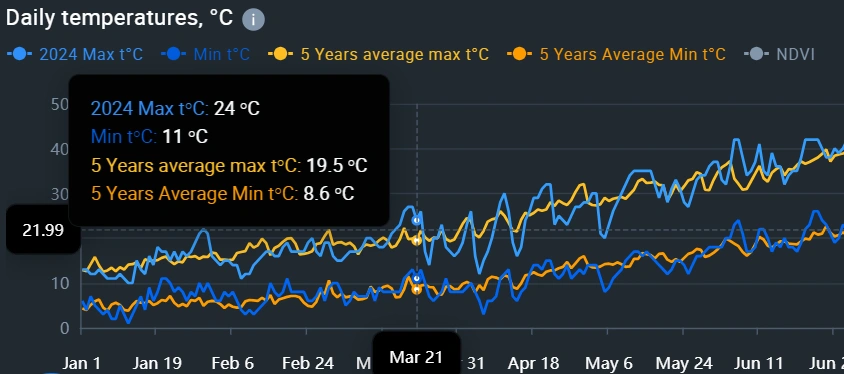
Best Soil To Grow Lettuce
Sandy peats, black sandy loams, and loams that are rich in nutrients and have good drainage are best suited for the leafy green . The optimal pH for growing lettuce ranges from 6 to 6.8. Amend the soil with organic matter, such as compost or aged manure, about a week before sowing or transplanting seedlings. The last but not least thing to do before planting is to till the soil well and remove any stones or big clods to ensure the crop’s tiny seeds germination.
Planting Lettuce: Practices And Timing
Before planting, find a location with adequate sunlight to avoid wilting or bolting of the growing crop. While it is possible to grow plants outside from seed, transplanting them is the safer option when dealing with spring frosts or overly hot summer temperatures in your growing region.
When To Plant Lettuce
The growing season starts in the spring and continues all the way into the fall (or even longer in areas with warm winters), with a peak in the cooler months. The best time to plant lettuce in the field is a few weeks after the last hard frost in spring or a month or two before frost in the fall. Plant in full sun in the spring and fall, but when growing in the summer, choose a shady place or use a protective covering to shield your crops from the scorching sun.
How To Plant Lettuce
Direct lettuce sowing and transplanting are both viable options for farmers. When seeding directly, either put seeds in rows or scatter them for a wider row planting with a lettuce planting depth of 0.25 inch (0.66 cm). About 11.4–14.3 oz/ac (800–1000 g/ha) of seeds is the standard seeding rate.
Transplanting is an effective way to protect seedlings from temperature extremes. Start your plants indoors, and then transplant them to the field around two weeks after the last spring frost. If you want to grow lettuce during the summer, transplant seedlings after the heat wave has passed. When choosing how far apart to plant lettuce, a rule of thumb is 7–12 inches (18–30 cm) between plants in a row and 11–23 inches (27–60 cm) between rows.
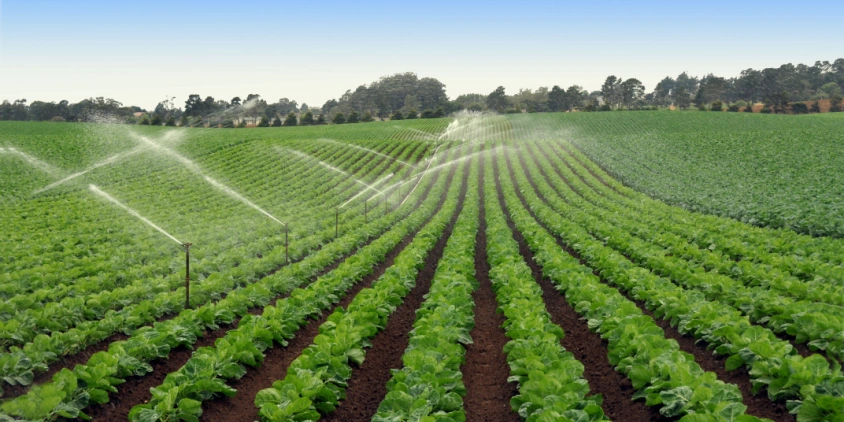
How To Care For Lettuce
Lettuce grows quickly, but it requires regular farmers’s attention and care during this period. The good news is that if you provide the crop with the water and nutrients it needs, it will reward you with a bountiful harvest.
Frequent Irrigation
With its shallow roots, the crop does best with less water applied more often. During the hottest hours, water can rapidly evaporate, so for plants to receive enough moisture, it’s best to irrigate during the cooler morning and evening hours. Lettuce may require daily watering during the sweltering summer months. Heat stress and bolting can occur in plants that are not watered frequently enough. Such crops are no longer marketable. Overwatering is also undesirable because of the increased risk of root rot and fungal diseases. Growing lettuce plants require soil that is constantly and evenly moist, but not soaked.
Plan and monitor the irrigation of each growing area with our Field activity log feature, allowing you to set application rates, time frames, responsible persons, and more. By including the application rate and input price, you can also immediately see the total cost for each planned activity.
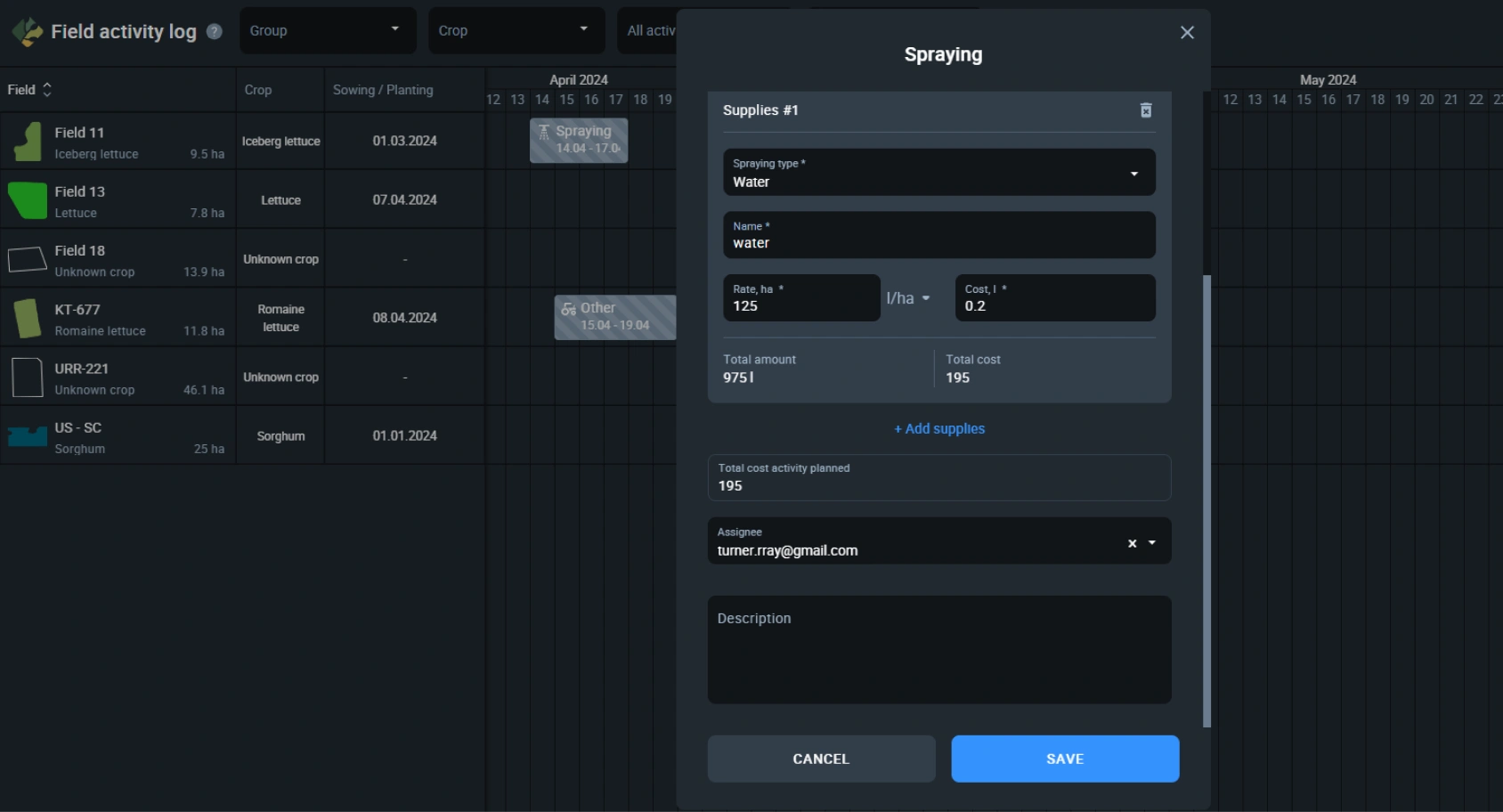
EOSDA Crop Monitoring
Performing fields analytics based on relevant satellite data to ensure effective decision-making!
Generous Mulching
Covering with organic mulch (anything from wood chips to grass clippings) is beneficial to the lettuce throughout the growing season. Spread a 2- to 3-inch (5- to 8-cm) layer around the plant, spacing it out slightly to avoid crop rot. Mulch serves several purposes:
- retains soil moisture;
- cools the soil;
- prevents weeds from growing;
- enhances the physical properties of soil and boosts its biological activity ;
- keeps leaves clean by reducing dirt splashes during watering.
Balanced Fertilizing
To grow healthy and robust crops, it’s recommended to conduct soil testing before fertilizing any lettuce field, but let’s go over some general guidelines. As the crop grows quickly, many farmers only apply fertilizer once, approximately three weeks after transplanting. They may also wait until the plant grows to a certain height before fertilizing.
Granular fertilizers with balanced NPK ratios, such as 10-10-10 or 5-5-5, are the most common in lettuce growing. The granules must not touch the seedlings due to the high risk of fertilizer burn. When more rapid nutrient uptake is required, liquid fertilizers delivered via fertigation systems are more effective than granular fertilizers.
You can optimize input allocation in your lettuce fields by using variable rate applications (VRA) — applying more fertilizer to areas with low vegetation and less to areas with medium and high vegetation. Refer to the VRA maps in EOSDA Crop Monitoring for easier implementation. We generate the maps using recent cloudless satellite images of your field to display its division into zones based on vegetation levels. Little vegetation in a certain growing area may be due to the plants not getting enough nutrients, particularly nitrogen; more intensive fertilization is desirable there.
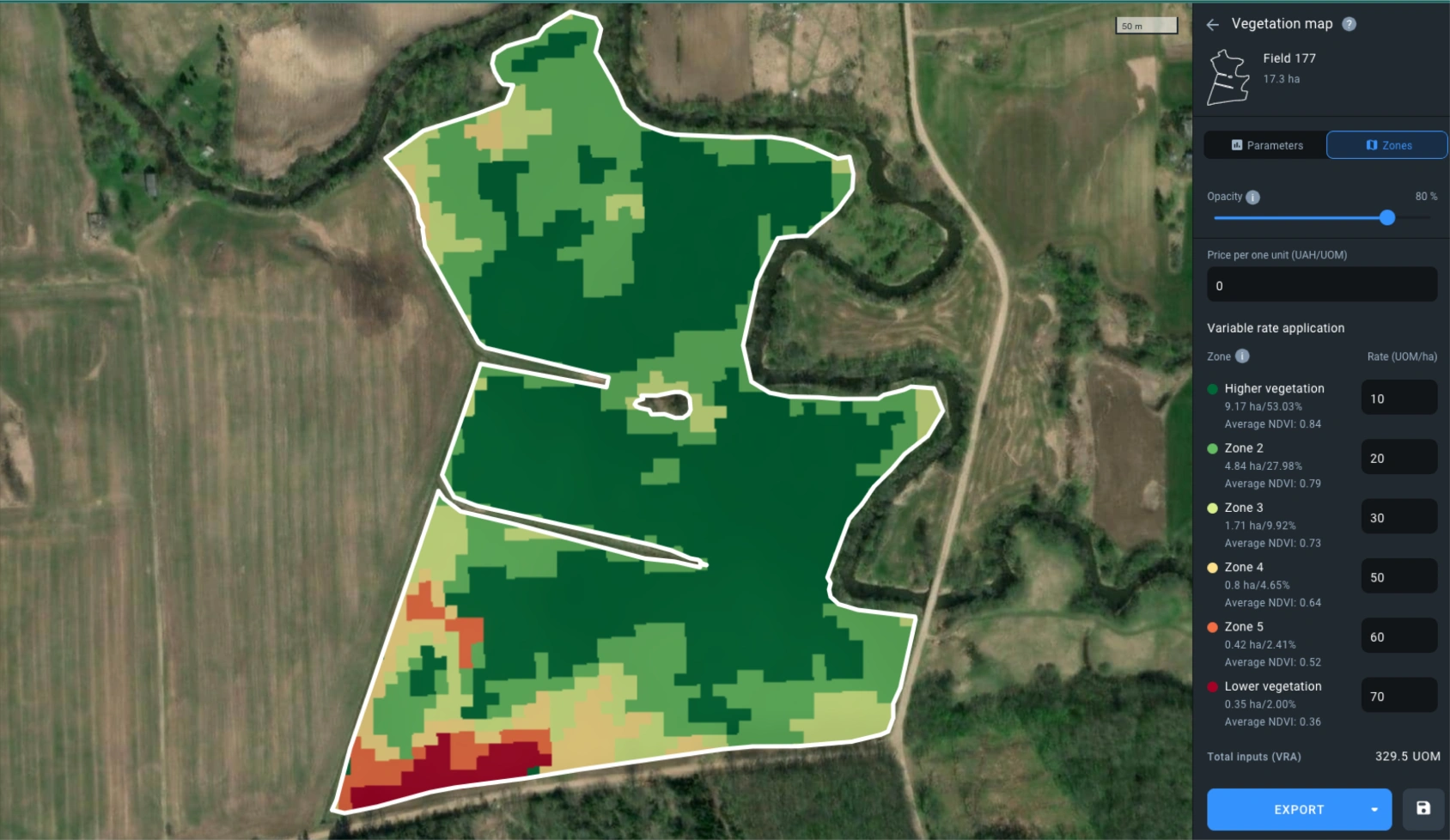
Timely Pest And Disease Control
Farmers should plan ahead to control diseases and pests that could threaten their growing crops. Below is a list of the most prevalent crop diseases and pests, along with symptoms to check for.
| Pest/Disease | Symptoms |
|---|---|
| Aphids |
|
| Slugs |
|
| Lettuce mosaic virus |
|
| White mold |
|
| Downy mildew |
|
| Powdery mildew |
|
| Grey mold (botrytis) |
|
Using the following methods and their combinations, you may protect your growing lettuce from problems with pests and diseases:
- using certified planting materials;
- ensuring enough room between growing plants;
- timely irrigation and good drainage;
- protective physical barriers from pests, such as row covers and sticky traps;
- encouraging natural pest enemies;
- regular remote crop monitoring and scouting for any warning signs;
- rotating lettuce with other types of crops.
EOSDA Crop Monitoring will be useful while adopting these lettuce disease and pest control measures. Plan and keep a record of crops grown in all your fields over the years using the Crop rotation feature, and streamline on-site checks of problem areas with the Scouting feature. Furthermore, the Disease risk function, which takes into account the plant growth stage, a hyperlocal weather forecast, and other factors, can alert you to the risk of disease development in the field.
How Long Does Lettuce Take To Grow?
Lettuce takes 65–130 days to grow, which varies by cultivar. However, farmers often start picking leaves earlier, around 30 to 70 days after seedling transplanting. The exact time for your leafy green to mature depends not only on the variety, but also on local growing conditions and farming practices.

How And When To Harvest Lettuce
Since the crop produces its most flavorful and tender leaves during the cooler months of spring and fall, these seasons are ideal for harvesting lettuce. However, you can harvest it effectively throughout the summer, provided it continues to grow leaves and has not bolted as a result of the longer days.
About six weeks after planting, or when the outer leaves reach six inches (15 cm), begin harvesting the outer leaves of leaf varieties, letting the plant grow and produce new leaves until late fall. Harvest head lettuce before the plant bolts; otherwise, the leaves can turn bitter and inedible.
To get the freshest leaves and heads, it’s best to harvest early in the morning (particularly in the summer or during heat waves). Any type of this fragile leafy green is picked by hand without further washing. Store the harvest in a cool (not freezing) place.
Farmers in climate-appropriate growing regions can produce 300–600 bushels per acre (20–40 tons per hectare) two to four times per year. High yields like these don’t come overnight, though; most farmers take at least a few years to truly get into lettuce growing. Satellite field monitoring and agricultural data analytics can give you a huge leg up. Contact our sales team at sales@eosda.com to learn about all of the capabilities EOSDA Crop Monitoring offers to help you maximize yields.
About the author:
Vasyl Cherlinka is a Doctor of Biosciences specializing in pedology (soil science), with 30 years of experience in the field. He attended the engineering college in Ukraine and received his degree in agrochemistry, agronomy and soil science in the Chernivtsi National University. Since 2018, Dr. Cherlinka has been advising EOSDA on problems in soil science, agronomy, and agrochemistry.
Recent articles

Analyze 2025 & Plan Your Best Year Yet: LandViewer Christmas Offer
It’s the most wonderful time of the year! The Christmas holidays are here, and so is your chance to analyze 2025 and plan a prosperous 2026 with more affordable Pro plans in LandViewer.

EOSDA Models Climate Change Impact On Sugarcane Yields
EOSDA modeled future temperature, rainfall, and other climate impacts on Veracruz sugarcane. The results help growers plan long-term adaptation strategies, including timing, varieties, and irrigation.

EOSDA LandViewer Black Friday Sale: Exclusive Offers & Giveaway
This Black Friday, LandViewer offers new users the chance to save on monthly plans, get extra months with yearly subscriptions, and participate in a free annual plan giveaway.